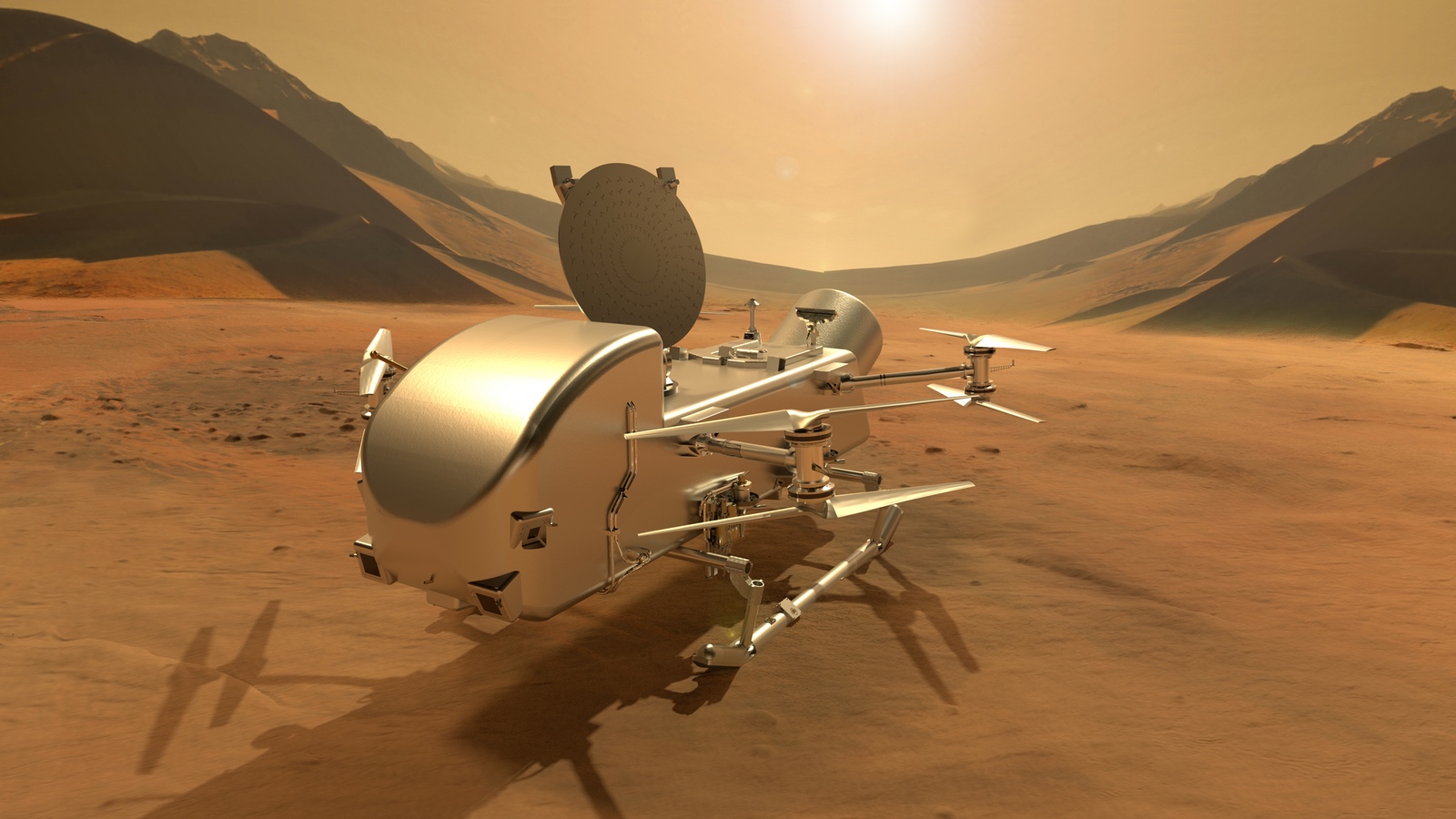WASHINGTON — Citing budget uncertainty, NASA is pushing back the launch of the Dragonfly mission to Saturn’s moon Titan by a year and postponing a key milestone in its development.
In a presentation at a Nov. 28 meeting of NASA’s Outer Planets Assessment Group (OPAG), Lori Glaze, director of NASA’s planetary science division, said agency leadership decided to postpone formal confirmation of the mission earlier this month, a milestone where the agency sets an official cost and schedule for the mission.
The delay in confirmation by NASA’s Agency Program Management Council (APMC), she said, is based on uncertainty about how much money will be available for the mission and other parts of NASA’s planetary science portfolio given broader budget pressures on the agency. “Because of these incredibly large uncertainties in FY ’24 and FY ’25 funding and budgets, the decision was made at that APMC to postpone the official confirmation,” she said.
Instead, the APMC will reconvene after the release of the agency’s fiscal year 2025 budget proposal in early 2024. “We anticipate taking Dragonfly back to APMC in the spring” for a decision on confirmation, she said. In the meantime, though, NASA will allow the mission to proceed with some elements of final mission design and fabrication that usually do not start until after the confirmation review.
NASA requested $327.7 million for Dragonfly in fiscal year 2024, which was 18% less than what the mission received in 2023 but, the agency said at the time, would keep the mission on schedule to meet a launch readiness date of June 2027. Project officials warned in May that the requested funding was below what they estimated was needed and that they were “evaluating cost and schedule options” for the mission.
Glaze said at the OPAG meeting that a “replan” of the mission by the project team over the summer, using a revised budget profile, led to a new launch readiness date of July 2028, one year later than previously planned.
The delays for Dragonfly come as NASA grapples with projected funding shortfalls in its overall planetary science division as well as in many other parts of the agency, triggered by a budget deal in June that capped overall non-defense discretionary spending at 2023 levels for 2024 and only a 1% increase in 2025.
NASA requested $3.38 billion for planetary science in 2024, but a House bill would provide $3.1 billion and a Senate bill $2.68 billion. The report accompanying the Senate bill would direct NASA to spend $327.7 million on Dragonfly in 2024, while the House report is silent on the mission.
Glaze said that, despite the budget problems, there remains “incredible support” for Dragonfly within the agency. The mission, selected by NASA in 2019 as part of its New Frontiers line of medium-class planetary missions, would send a drone to Titan, flying through the moon’s dense atmosphere to visit several regions that may provide clues if the planet could have once supported life.
When NASA selected Dragonfly, it planned a launch in 2026. The agency announced in 2020 a one-year delay in the launch, to 2027, citing external pressures on the agency’s budget, including those linked to the pandemic. Glaze, at the OPAG meeting, did not identify any problems internal to the mission that caused the latest delay.
She noted at the meeting that she had limited options to dealing with reduced budgets. The division’s top priority, she said, is to complete Europa Clipper and launch it in October 2024, noting that any delay to that flagship-class mission would have its own budget repercussions. Other priorities include missions that have passed their confirmation reviews, such as the NEO Surveyor spacecraft to search for near Earth asteroids and the VIPER lunar rover, as well as research funding.
Besides the changes to Dragonfly, NASA has delayed calls for future New Frontiers and Discovery missions and slowed the start of a new flagship mission, the Uranus Orbiter and Probe. She did not rule out changes to other missions in earlier stages of development depending on the severity of budget cuts. “Anything in the portfolio that is not confirmed right now is at risk,” she said later at the OPAG meeting. “We’re waiting to see what happens.”
Related

Dr. Thomas Hughes is a UK-based scientist and science communicator who makes complex topics accessible to readers. His articles explore breakthroughs in various scientific disciplines, from space exploration to cutting-edge research.








